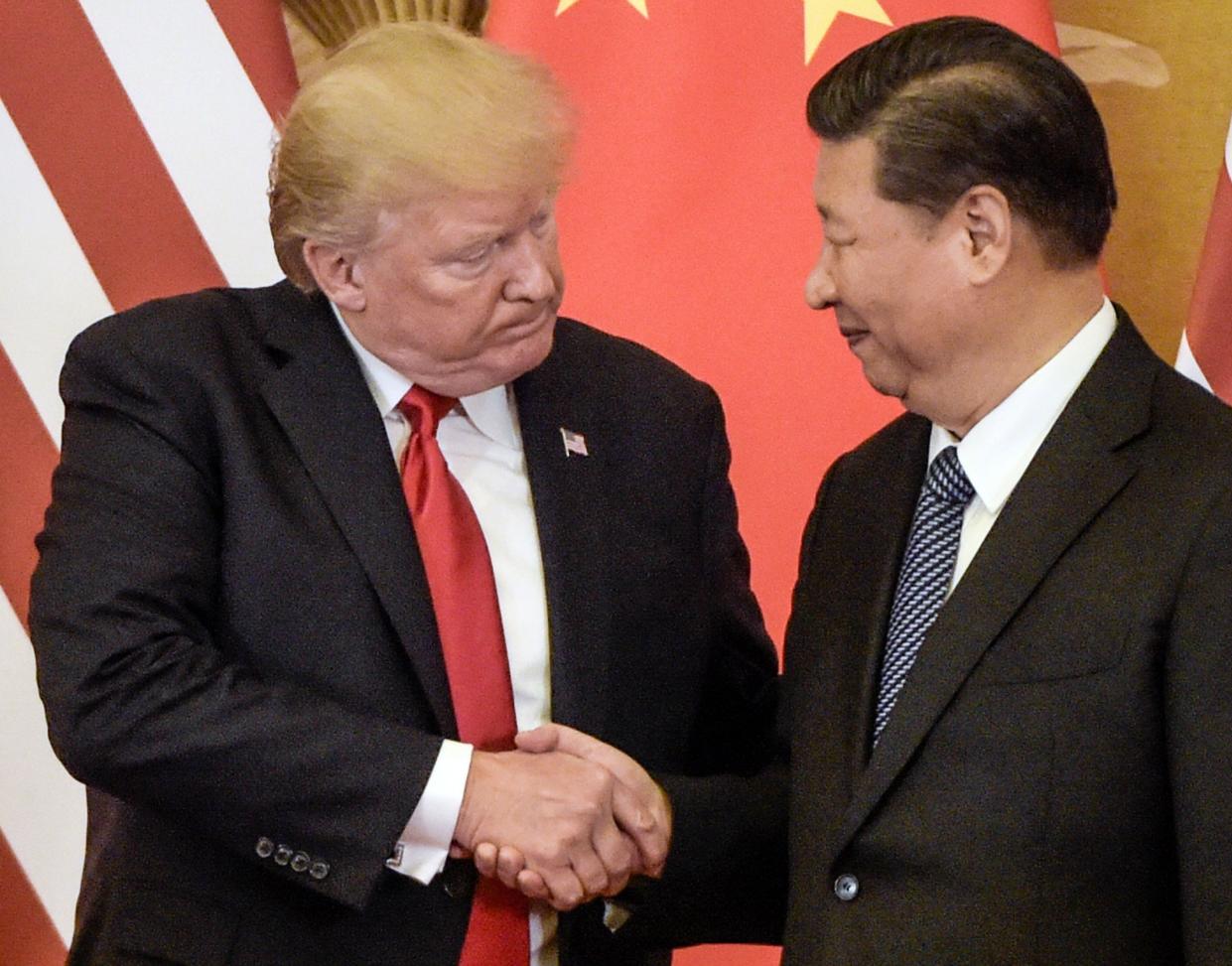Donald Trump delays next round of China tariffs amid talks on limited trade deal

WASHINGTON – President Donald Trump said Friday he will delay tariff hikes on China next week as the the two sides seek to hammer out a limited trade deal.
Trump said he and Chinese negotiators had a deal "in principle" to prevent intellectual property theft and for China to buy $40 billion to $50 billion of U.S. agricultural goods but the details have yet to be put to paper and formalizing them is at least a month away.
Trump said he hopes to agree on specifics when he and Chinese President Xi Jinping meet at an economic summit in Chile in mid-November.
“I don’t think it should be a problem getting it papered," Trump told reporters after an Oval Office meeting with a Chinese trade delegation.
In the meantime, Trump said he would suspend future tariffs on China, including a $250 billion hike that was to have kicked in Tuesday. China had planned to retaliate for that tariff hike, but will now hold off also.
Trump said the negotiators were working on "phase one" of a deal that would ease the trade war between the two countries. "Phase two" would be a broader agreement involving tougher issues, including the forced technology transfers that China imposes on U.S. businesses.
Trump met with China's top trade negotiator Friday after aides discussed the prospects of a temporary deal designed to freeze the ongoing trade war between the world's two largest economies.
"All would like to see something significant happen!" Trump wrote on Twitter.
Stocks climbed after Trump expressed confidence ahead of his meeting with China Vice Premier Liu He, China's top trade envoy.
Economic analysts said it sounds good on the surface, but they want to see a final product signed, sealed, and delivered.
"A verbal deal seems to taken positively by markets but it’s still more than a month away before the Presidents meet in Santiago (Chile)," Riley Walters, an analyst of Asian economic and technology policy at the Heritage Foundation. "The devil will be in the details but it sounds like there’s at least some good progress being made."
Walters also noted that "I’m glad to see next week’s tariffs have been postponed," but "there are still tariffs on over $400 billion worth of imports from China that Americans will continue to have to pay until a comprehensive deal is made."
Jason Oxman, president of the Information Technology Industry Council, a trade group, said a "phase one" agreement would be "a step in the right direction."
"It’s critical that both sides capitalize on this momentum to conclude a broader agreement that addresses longstanding unfair trade practices and policies in a meaningful way and rolls back detrimental tariffs," Oxman said. "It’s time for this trade war to come to an end.”
Trump has previously said he would insist on a full-blown trade agreement that would settle long-time disputes over tariffs, currency rates, technology sharing, and intellectual property laws.
"We’re looking for a complete deal," Trump told reporters on Sept. 20. "I’m not looking for a partial deal."
Meanwhile, China – which has criticized various U.S. trade policies throughout the week – had signaled an interest in something temporary as talks got underway Friday.
"A partial deal is a more feasible objective," said an editorial in English in the state-run China Daily newspaper. "Not only would it be of tangible benefit by breaking the impasse, but it would also create badly needed breathing space for both sides to reflect on the bigger picture."
In a morning tweet, Trump claimed that "good things are happening at China Trade Talk Meeting. Warmer feelings than in recent past, more like the Old Days."
Since summer 2018, the U.S. has slapped tariffs, ranging from 10% to 25%, on about $360 billion in Chinese imports. The early tariffs largely focused on intermediate and industrial goods but the most recent have targeted consumer products such as clothing and electronics.
China has retaliated with duties on about $110 billion in U.S. shipments to that country, largely hitting agricultural products such as soybeans, fruit and vegetables, in an attempt to undercut support for Trump among his base in the farm belt. The levies also affected coffee, chemicals, cars, auto parts, whiskey, cigars and TVs.
With negotiations at an impasse in May, Trump significantly escalated the battle, boosting a 10% tariff on $250 billion in Chinese imports to 25% and announcing levies on the remaining $300 billion in products not already subject to duties.
Although Trump initially delayed the new tax on nearly $300 billion in mostly consumer products, he upped the ante in August following another fruitless round of trade talks. A 15% tariff on $112 billion of the imports took effect Sept. 1, up from a planned 10%, ensnaring items such as clothing and shoes. A 15% tariff on the remaining $160 billion -- including toys, cell phones and laptops – is set to hit Dec. 15.
Retailers and manufacturers have absorbed much of the costs, but have started passing some along to American shoppers and warned further price increases are likely on the way.
Also, a 25% tariff on the $250 billion in largely intermediate goods is set to rise to 30% Tuesday, barring a trade deal in the coming days.
Last month, both sides tamped down the crossfire ahead of the talks, with Trump delaying the duty on the $250 billion in products by two weeks and China excluding some items, such as animal feed and petroleum products, from its tariffs.
This article originally appeared on USA TODAY: Donald Trump delays China tariffs amid talks on limited trade deal

